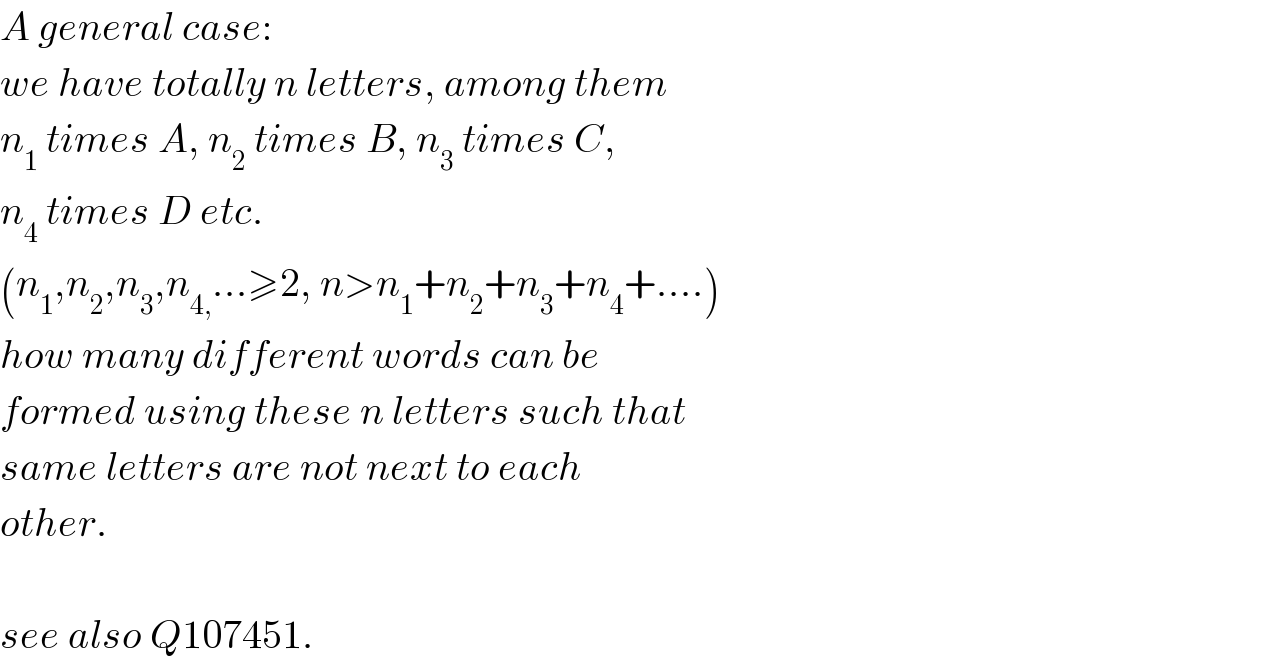Question Number 107844 by mr W last updated on 13/Aug/20

$${A}\:{general}\:{case}: \\ $$$${we}\:{have}\:{totally}\:{n}\:{letters},\:{among}\:{them} \\ $$$${n}_{\mathrm{1}} \:{times}\:{A},\:{n}_{\mathrm{2}} \:{times}\:{B},\:{n}_{\mathrm{3}} \:{times}\:{C}, \\ $$$${n}_{\mathrm{4}} \:{times}\:{D}\:{etc}. \\ $$$$\left({n}_{\mathrm{1}} ,{n}_{\mathrm{2}} ,{n}_{\mathrm{3}} ,{n}_{\mathrm{4},} …\geqslant\mathrm{2},\:{n}>{n}_{\mathrm{1}} +{n}_{\mathrm{2}} +{n}_{\mathrm{3}} +{n}_{\mathrm{4}} +….\right) \\ $$$${how}\:{many}\:{different}\:{words}\:{can}\:{be} \\ $$$${formed}\:{using}\:{these}\:{n}\:{letters}\:{such}\:{that} \\ $$$${same}\:{letters}\:{are}\:{not}\:{next}\:{to}\:{each} \\ $$$${other}. \\ $$$$ \\ $$$${see}\:{also}\:{Q}\mathrm{107451}. \\ $$
